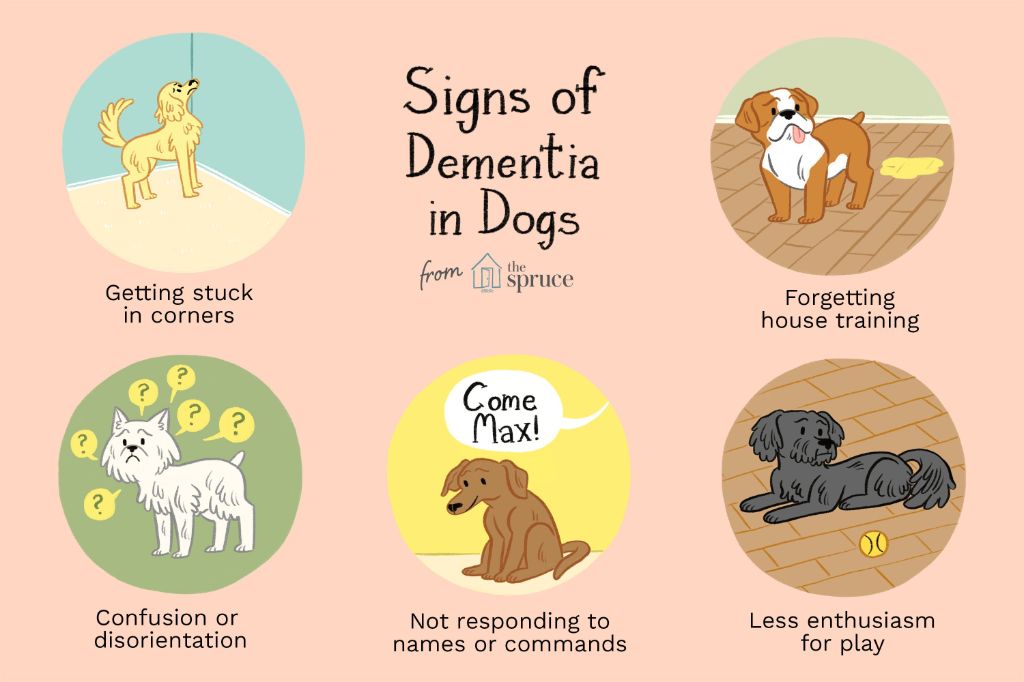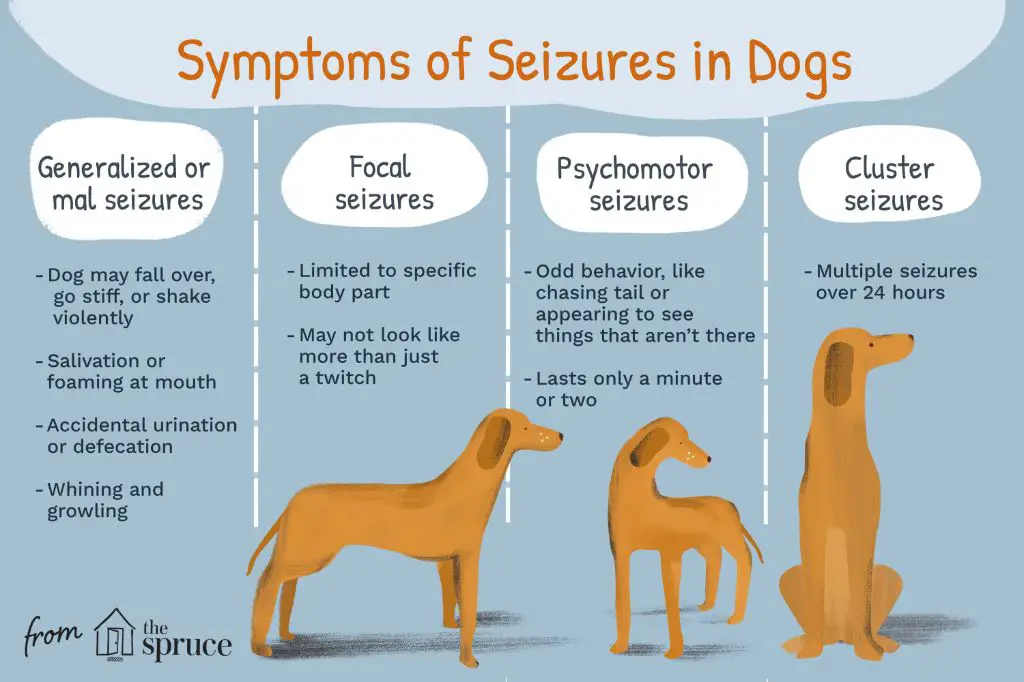Introduction
The phenomenon of dogs staring off into space for no apparent reason is something many dog owners have witnessed. Also referred to as “zoning out” or “trancing,” this behavior involves a dog gazing silently at a wall, up at the ceiling or sky, or even just out into the distance with a glazed-over look in their eyes. While this trance-like state may seem concerning or strange to owners at first, it’s actually quite normal canine behavior that stems from a few possible causes.
Possible Causes
There are several possible explanations for why a dog may stare off into space for no apparent reason. Some of the most common causes include:
Dementia – Just like humans, dogs can develop cognitive dysfunction and dementia as they age. This can cause them to seem spaced out or stare blankly. According to the AKC, the signs of canine cognitive dysfunction often begin after age 7.[1]
Vision problems – Dogs rely heavily on their vision and vision issues like cataracts, glaucoma, or retinal degeneration can potentially cause staring behaviors as they struggle to see clearly. Gradual vision loss may cause disorientation.
Seizures – Dogs experiencing focal seizures may stare blankly into space, seem unresponsive, or exhibit other odd behaviors. Frequent staring episodes could indicate an underlying seizure disorder.
Hearing loss – Deafness or hearing problems in dogs can also potentially manifest in staring behaviors as the dog struggles to interpret its surroundings without auditory input. This may be accompanied by apparent confusion or anxiety.
[1] https://www.akc.org/expert-advice/health/why-dog-staring-at-wall/
Dementia
Dementia in dogs is one of the most common causes for staring blankly at nothing (Source). As dogs age, they can develop canine cognitive dysfunction which is similar to Alzheimer’s disease in humans. It causes personality changes, disorientation, loss of prior house training, and impaired memory. Staring blankly is believed to be a result of the dog’s confusion and inability to recognize familiar surroundings. Owners may notice their dog staring at walls, furniture, or even just into space for prolonged periods of time. The blank stare is likely due to the dog’s lack of mental stimulation. Dementia tends to progresses over time, so owners may want to discuss medications and supplements with their vet that could help slow the decline in cognitive function.

Vision Problems
Vision problems are a common cause of dogs staring into space or at walls. As dogs age, they can develop cataracts, glaucoma, and other eye diseases that may result in partial or total blindness (Zigzag, 2022). Dogs that have suddenly lost their vision may stare blankly as they try to adjust. In some cases, dogs with declining vision may misperceive patterns on walls or floors as actual objects or movements. Staring may indicate they are having trouble seeing clearly or making sense of visual information.
Vision loss often starts gradually, and owners may not notice small changes in their dog’s eyesight. Dogs who stare blankly, walk into objects, or seem confused in familiar environments may have developed visual impairments. Cataracts, a clouding of the eyes’ lenses, are common in senior dogs and can cause staring when they interfere with sight. Some breeds are also genetically prone to progressive retinal atrophy, which can cause vision loss and staring behaviors. If a dog is exhibiting other symptoms like bumping into furniture or anxiety, a veterinary eye exam can identify if vision issues are causing the staring episodes.

Seizures
Seizures can cause dogs to stare blankly and lose awareness of their surroundings. There are different types of seizures in dogs:
Grand mal seizures involve the dog losing consciousness, collapsing, paddling their limbs, drooling, urinating, and sometimes barking. These severe seizures typically last 1-3 minutes.
Petit mal or focal seizures are less severe, with the dog staring vacantly, trembling, shaking their head, and having difficulty standing. These absence seizures last less than 30 seconds. According to the PDSA, petit mal seizures can look like a dog is simply daydreaming.
Cluster seizures involve multiple seizures within a 24 hour period, which requires urgent veterinary attention. Status epilepticus refers to a seizure lasting more than 5 minutes or seizures occurring back-to-back, which is a life threatening emergency.
If a previously healthy dog experiences a first-time seizure, the vet will run tests to determine the cause. Dogs with recurrent seizures may be diagnosed with epilepsy and require lifelong medication to control the seizures. While frightening for owners, most dogs with well-managed epilepsy can live a full life.

It’s important to remain calm and gently secure the dog during a seizure. Call the vet immediately if it lasts more than a few minutes, occurs in clusters, or if the dog’s status deteriorates after the seizure. VCA Hospitals states most seizures are brief and self-limiting, but prompt treatment is key.
Hearing Loss
Hearing loss is common in older dogs and can cause them to stare blankly, as they may not hear noises they usually respond to. Certain breeds like Dalmatians are prone to congenital deafness, which could also lead to blank staring if they cannot hear normal sounds (WagWalking). The first sign of hearing loss is often not responding to commands or sounds. Head tilting, difficulty waking up, and changes in behavior like increased barking or anxiety can also indicate hearing problems (GoodRx).
There are various causes of hearing loss like chronic infections, hypothyroidism, tumors, trauma, and toxicity from medications. Older dogs commonly experience age-related hearing loss that may cause blank stares. To help a deaf dog, use hand signals and vibrations to get their attention. Keep them leashed outside for safety. Medications, hearing aids, or surgery may help in some cases, so see a vet if your dog is showing signs of hearing trouble (ToeGrips). With patience and accommodation, dogs can adapt well to hearing loss.
Daydreaming
Many pet owners wonder if their dog is daydreaming when they seem to stare off into space (https://pethelpful.com/dogs/Whats-Up-With-Dogs-Staring-at-the-Wall). Dogs do have an inner life, imagination, and vivid memories of past experiences that they could be reminiscing about when staring blankly. Their minds may wander in peaceful daydreams. However, while daydreaming or reminiscing is one possible explanation for a dog staring at nothing, it’s likely not the primary reason in most cases.
Breed Predisposition
Some dog breeds are more prone to staring than others. Herding breeds like Border Collies and Australian Shepherds are especially prone to staring behaviors due to their intense focus and high intelligence. Siberian Huskies are also frequent starers, likely due to their close connection to their wild wolf ancestors. German Shepherds often stare as part of their protective, watchful nature. Other breeds like Golden Retrievers may stare simply because they are so people-focused and crave human interaction.

Certain traits can make particular breeds more likely to stare for long periods. Highly intelligent and energetic working dogs like Collies may stare while deep in thought or daydreaming. Independent breeds like Siberian Huskies are more prone to staring off into the distance out of curiosity or boredom. Dogs bred for guarding like German Shepherds tend to stare watchfully at their surroundings. In general, any dog can develop a staring habit, but some breeds are genetically predisposed based on their breed-specific traits.
While staring may be more common in certain breeds, excessive staring in any dog could signal an underlying medical issue. Consult a veterinarian if staring seems compulsive or problematic.
When to See a Vet
If your dog is staring into space frequently or for long periods of time, it’s important to have them examined by a veterinarian. Some key signs that warrant a vet visit include:
Sudden changes in behavior like increased staring or zoning out (cite: https://www.healthline.com/health/9-warning-signs-dog-needs-veterinarian)
Staring combined with other symptoms like loss of balance, seizures, or head tilting (cite: https://www.tandcvets.com/10-warning-signs-your-dog-needs-to-go-to-the-veterinarian/)
Staring that leads to walking into walls, furniture, or getting stuck in corners
Signs your dog is confused or seems to lack awareness of their surroundings
Inability to respond to cues or their name being called
A veterinarian can run tests to check for underlying conditions like dementia, neurological disorders, vision or hearing loss. Early examination increases chances of successful treatment. Any sudden behavior changes in an aging dog warrant a veterinary visit. Staring that comes on quickly or reaches excessive levels requires prompt medical attention.
Conclusion
In summary, there are a variety of possible explanations for why dogs stare at nothing, including:
- Dementia or cognitive dysfunction, which can cause confusion and strange behaviors
- Vision problems like cataracts, which may make dogs see things that aren’t there
- Seizures, as dogs may stare prior to a seizure episode
- Hearing loss, making dogs stare into the distance to detect sounds
- Daydreaming or being lost in thought, similar to human zoning out
- Breed tendencies, as herding breeds tend to stare more than other breeds
If the staring is accompanied by other symptoms or persists for long periods, it’s a good idea to have the dog evaluated by a veterinarian. While sometimes disconcerting for owners, staring into space is often a normal dog behavior, but it’s important to rule out potential medical causes. By understanding the reasons behind this phenomenon, dog owners can better interpret this behavior when it occurs.